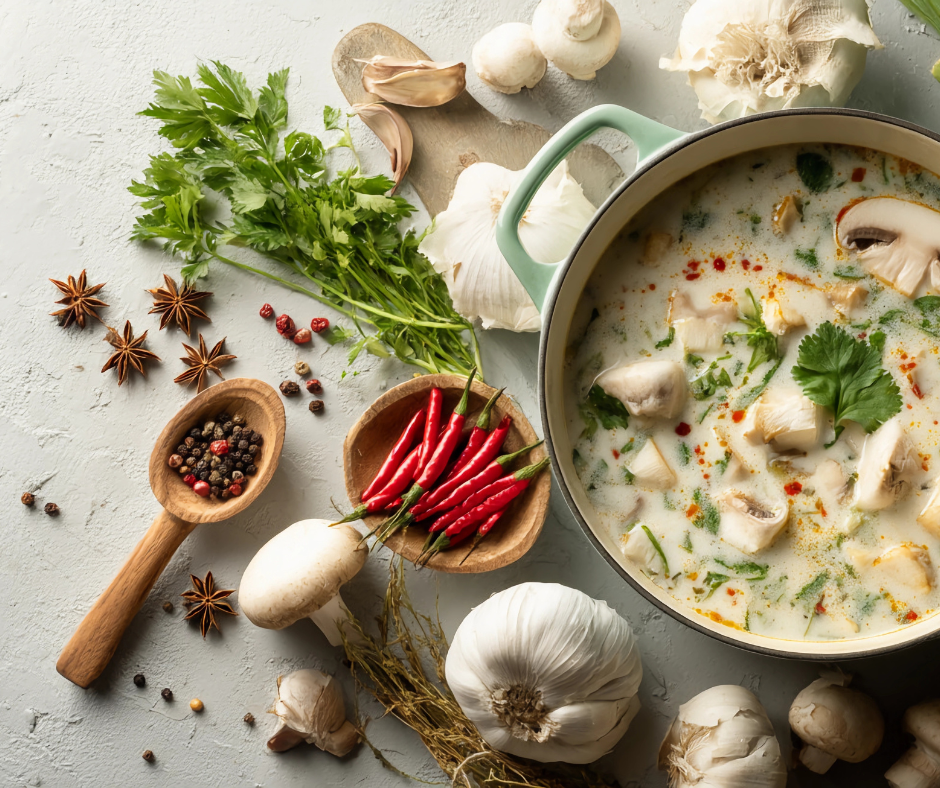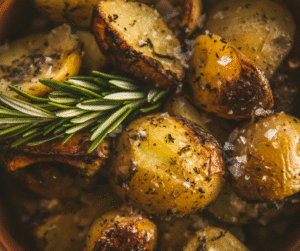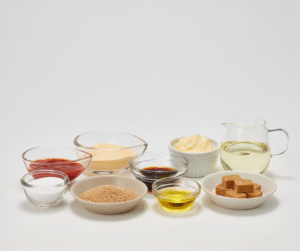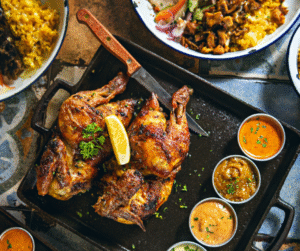Sophisticated Soup: Elevate Soup Beyond Misery

The transformation of basic soup into a sophisticated, highly satisfying meal hinges on strategic flavour layering, minding the final texture, and the artful use of contrasting garnishes. By adopting a ‘no-waste’ philosophy and integrating bold global inspirations, one can effortlessly produce nutritious, bulk-cooked, and impressive soups that bear no resemblance to the miserable fare of one’s youth.
It is that time of the year where we crave something hot, hearty, and healing. Nothing quite hits the spot like a proper bowl of soup. Personally, I much prefer if you sip your soup because, truly, nothing grates my nerves greater than the sound of somebody slurping. However, the greater sin is when soup becomes a bowl of misery—that dreadful, gelatinous mess that reminds me of Oliver Twist or Dickensian times. Boarding school and nursery school put me off soup for life.
I’ve had to dedicate time to exploring ways to make soups interesting, particularly when I transitioned to vegetarian cooking and couldn’t rely on a classic meat-based stock. You see, boiling things to death and throwing them in a bowl is simply unacceptable; it’s an insult to the palate.
I had to get creative, and the glorious revelation is that soup is a wonderful, effortless way to get rid of all your sad-looking leftovers. I usually buy a lot of fresh produce over the weekend, and by the end of the next week, some of it looks a bit… forlorn. Rather than waste, I chop everything up, sauté it, blitz it into a smooth texture, and freeze the excess. I then have ready, instant, nutritious, and delicious meals that require a minimum of fuss.
Stealing Inspiration: Global Soup Concepts
A good soup begins with stealing inspiration, not just blindly following a recipe. What I have learned from my culinary research is that every major cuisine has a staple, and you can easily adapt these concepts to suit whatever sad vegetables you’re trying to salvage.
Rich and Chunky: The Italian Comfort
If you want something rich, hearty, and substantial, nothing comes close to a minestrone. It is the classic Italian soup with chunky vegetables, beans, and a herbaceous tomato base—think of it as the Italian answer to a blanket and a cuddle.
My key distinction here is that minestrone doesn’t always have to include pasta, which frankly gives me the grils. Those soggy noodles are everywhere in the bowl. While my husband loves the pasta, I will only eat minestrone if he makes it without it. You can, technically, still call it minestrone.
Hot and Bracing: The Asian Vibe
For something lighter, bolder, and altogether more bracing, you can steal inspiration from Thailand with a Tom Yum soup. This hot and sour broth, bursting with lemongrass, chillies, and lime, is not just soup; it’s a whole vibe. The ingredients are so simple—the flavour is all there.
I’ve done this myself: if you’ve got ready-cooked or leftover chicken, you can shred it finely and throw it into your Tom Yum for added substance, or stick with prawns or mushrooms if you prefer. This is a wonderfully refreshing soup, even in the depths of winter, because it is quite stringent and clean on the palate.
This reminds me of miso soup from Japan. If you have those Asian ingredients in your pantry, you can quickly whip up a broth, add miso paste, seaweed, and perhaps some tofu. Now, I won’t say it’s like a hot mug of Bovril—though I’ve seen friends rave about adding Marmite to hot water—but miso soup requires a little more finesse than that.
Creamy and Elegant: The Eastern European Contrast
If you want to get really specialised and elegant, look no further than Eastern Europe.
Vichyssoise (which, I believe, is French but often associated with that refined style) is deliciously creamy and hearty, made from simmered potatoes and leeks. I love it because of the leeks’ incredible flavour profile, and you can serve it hot or cold.
Borscht (from Ukraine or Russia) is a vibrant beetroot soup. I always think borscht looks so elegant because of its vibrant crimson colour. Top it with sour cream, dill, or even some double-cream yoghurt—it gets this beautiful pink hue—and you have a surprisingly tangy and earthy meal. I prefer the contrast of that intense colour against the cool, white cream, topped with fresh dill, not lazy parsley.
The Authority of Layered Flavour and Texture
The crucial difference between miserable nursery school gruel and soup fit to serve guests lies in the technique. The common mistake is simply throwing everything into a pot and bringing it to a slow simmer, which makes your whole house smell like a nursing home. I prefer to layer my flavours for maximum depth.
Building a Flavour Foundation
My research has consistently shown that a great soup begins with a good foundation, or mirepoix. Simply take a base of onions, carrots, and celery, chop or slice them very finely, and sauté them to bring out those initial flavours. I seem to talk about mirepoix every week, but it’s the secret to depth!
These three holy trinity components add sweetness, depth of flavour, and that vital umami at the base, meaning you can basically throw everything else on top. Adding seasonal vegetables is always a great choice, as they taste better, are as fresh as possible, and work out cheaper—a great way to save money and ensure you don’t waste.
Mastering the Texture and Acid Test
A chunky soup can be messy; I find a smooth and silky texture far more manageable and elegant. I grab my stick blender and blitz everything to perfection. However, to ring a few changes, sometimes I’ll go half and half—I’ll blitz half the soup with the immersion blender and stir the remaining chunky portion back in. This gives a beautiful balance of smooth and chunky.
Regardless of your texture preference, always remember to include a touch of acid at the end. A splash of vinegar or some lemon juice can really lift and balance your flavours. This is why I love the Tom Yum soup so much; that little bit of astringency is surprisingly vital, even in a hot winter soup.
Garnishes: Elevating the Mundane to the Spectacular
Soup should never remind you of nursery school. It should be spectacular. Once you have the right texture and a wonderful flavour, it’s all about presentation—you eat with your eyes, after all. Garnishes are where you truly elevate the mundane into something good enough to serve guests.
The Creamy Contrast
My go-to is always sour cream, yoghurt, or creme fraiche. It adds a cool, creamy richness that is perfect for winter. Furthermore, if you’ve made an exceptionally spicy or hot soup—like a curried chicken soup that verges on stew, which I once made with incredible success—adding a cream component sort of tempers the heat beautifully.
Crunch and Visual Appeal
You need to find ways to add flavour, add texture, and add that all-important visual component.
- Toasted Seeds and Nuts: Sprinkle some crunch, protein, and healthy fats, making the soup more substantial.
- Fresh Herbs: A handful of fresh herbs adds a pop of flavour and a much-needed pop of colour.
- Flavoured Oils or Pesto: A quick drizzle of flavoured oil or a herby pesto adds a wow factor.
- Croutons: I am a sucker for croutons. You can buy them ready-made anywhere, and they add that necessary crunch because, let’s face it, soup can be a bit of a misery otherwise.
So, Jozi Stylers, whether you’re making soup from scratch or giving leftovers a glow-up, it’s not just what’s in the pot; it’s what you ladle out.
Now, here is your homework: go through your fridge and your pantry this weekend. Salvage everything that is still edible before it gets wasted. Pour yourself a deep glass of red wine—preferably red, given the cold weather—and sauté and simmer everything into a delicious soup or stew. You can always freeze the excess, and trust me, when the temperatures drop even colder in the next couple of months, you will thank me.
Comment: What global soup concept will you experiment with this weekend to transform your leftovers into luxury?
Subscribe to JoziStyle, follow us online and listen to us on air to keep up with the standards that matter.





